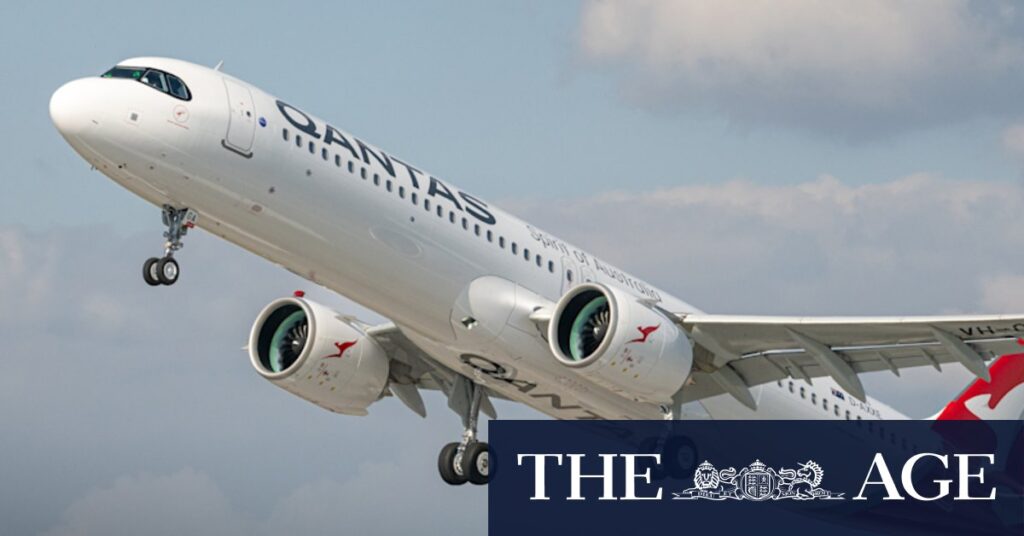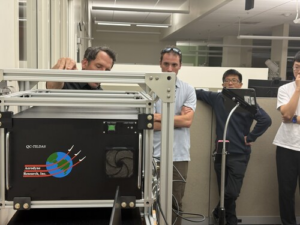
Qantas passengers will notice significant upgrades on domestic flights starting Thursday, as the airline introduces its new Airbus A321XLR aircraft into commercial service. The first two planes, named Outback Way (VH-OGB) and Great Ocean Road (VH-OGA), will debut with flights from Sydney to Perth and Sydney to Melbourne, marking a pivotal step in Qantas Group’s multibillion-dollar fleet renewal.
The new Airbus models are set to replace the ageing Boeing 737s, offering a host of passenger-friendly features such as wider economy seats, larger windows, and complimentary high-speed Wi-Fi. A notable improvement is the 60% increase in overhead bin space, addressing a common complaint among travelers.
Fleet Expansion and Route Potential
Last month, Qantas announced an additional order of 20 A321XLRs, bringing its total Airbus orders to 48 aircraft. This move underscores the airline’s commitment to modernizing its fleet and enhancing operational efficiency. The A321XLR’s extended range of 8700 kilometers—over 3000 kilometers further than the 737—opens new domestic and short-haul international routes, easing congestion on existing pathways.
Qantas domestic chief executive Markus Svensson highlighted the potential for new destinations in South-East Asia and the Pacific Islands, areas previously inaccessible with the current narrowbody fleet. Qantas CEO Vanessa Hudson has also suggested an increase in routes to South-East Asia, with Perth-India flights as a potential addition.
Enhanced Passenger Experience
The A321XLR is five meters longer than its predecessor and boasts lower carbon emissions per seat, accommodating 197 passengers. The aircraft features 20 business class seats, up from 12, and 177 economy seats, up from 162, representing a 13% increase in capacity without compromising passenger comfort.
Business class passengers will enjoy 66% more legroom, with seats offering a 37-inch pitch, five-inch recline, and a suite of adjustable features. The reddish-brown leather seats include wireless charging pads, dual USB ports, and an extendable cocktail table. Economy seats, now 17.6 inches wide, provide additional comfort with extra cushioning, adjustable headrests, and dual USB ports.
Design and Technological Innovations
The aircraft’s interior design incorporates new materials and a refreshed color scheme, with higher ceilings and larger windows enhancing the sense of space and light. While domestic routes will not feature seatback screens, Qantas plans to equip 16 of the new aircraft with entertainment systems for longer routes, including transcontinental and international flights.
This launch is part of Project Winton, Qantas’s largest domestic fleet renewal initiative, initially announced in 2022 but delayed due to COVID-19-related supply chain challenges. The airline expects to receive its third A321XLR, Seven Peaks Walk (VH-OGC), in November, with seven aircraft slated for delivery by the end of the financial year.
Industry Context and Competitive Landscape
In a related development, Virgin Australia recently acquired its first Embraer 190-E2 narrow-body jet, which will primarily serve charter and regional routes in Western Australia starting next month. This move highlights the competitive dynamics in the Australian aviation sector, as airlines strive to enhance their fleets and expand route offerings.
As Qantas and its competitors continue to invest in fleet upgrades and route expansions, passengers can look forward to improved travel experiences and a broader range of destinations. The introduction of the A321XLR represents a significant milestone in Qantas’s strategic vision for growth and sustainability in the post-pandemic era.







